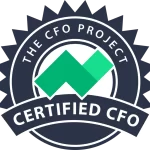Similar to the categorization of a company’s assets, liabilities are also divided into distinct subcategories. Typically, liabilities are categorized into two primary groups: current liabilities and long-term liabilities. When presented on a balance sheet, these liabilities are typically arranged in ascending order of their respective maturities, providing a quick overview of when they are due and their durations.
Balance Sheet Liabilities: Current Liabilities on your Balance Sheet
Balance Sheet Liabilities: Current Liabilities encompass obligations that must be settled within a one-year timeframe. Several instances of current liabilities include:
Loans
Short-term loans are categorized within a company’s current liabilities and are secured by the company’s existing assets and inventory due to their short repayment timeframe. The entire loan balance is recorded accordingly.
In the case of long-term loans, although they are typically classified as long-term liabilities, segments of these loans may appear under the “current liability” section of the balance sheet. For instance, consider a startup company with a $400,000 loan, of which $50,000 is due this year. The portion of the loan due within the current year ($50,000) is reflected in the current liabilities section, while the remaining amount ($350,000) is categorized as a long-term liability.
Accounts Payable
Companies typically establish a payment schedule for their accounts payable. In general, vendors extend a thirty-day period for a company to settle an invoice, unless alternative arrangements have been agreed upon. This thirty-day credit window essentially resembles a short-term loan, which is why accounts payables are categorized under the current liabilities section of the balance sheet. The figure representing accounts payable on the balance sheet corresponds to the amount owed to vendors and suppliers as of the date the balance sheet is generated.
Accrued Liabilities (Expenses)
Accrued liabilities, also known as accrued expenses, refer to costs that have been incurred during a specific period but have not yet been settled or recorded in the accounts payable. These accrued expenses encompass various items, including payroll. Employee wages are not pre-paid but rather compensation for services already rendered. For instance, consider a company with a monthly payroll cycle. Treating an employee’s compensation in June as an expense for June would be inaccurate. In reality, you are compensating the employee for work performed in August. To rectify this, you record payroll as an accrued expense, signifying that it represents payment for August’s services, even though the actual disbursement occurs in September.
Long-Term Liabilities
Balance Sheet Liabilities: Long-term liabilities encompass obligations with a repayment timeline exceeding one year. Examples of items falling under long-term liabilities encompass company bonds, extended-duration loans like mortgages and other bank loans. Additionally, owner’s equity is categorized within this classification, including company shares and stocks. Retained earnings, which represent profits reinvested into the business, are also recorded as long-term liabilities.
At SecureCFO, we manage the accounting needs of businesses, regardless of size, with a keen eye for detail and customization. We go beyond the general ledger by offering expert advice on accounting software and personalized services. Understanding general ledger accounting and its reliance on double-entry bookkeeping equips business owners with the knowledge to better manage their financial health and make informed decisions.
As a certified CFO, I bring a robust blend of expertise and accreditation to the table, ensuring that my strategic financial management and controller services not only aligns with industry best practices but also drives substantial value and innovation in the services sector. My certification is a testament to my commitment to excellence and my capability to navigate complex financial landscapes effectively, making me a trusted advisor in your journey towards greater profitability and business success.
Start mastering your financials today! Dive deeper into how outsourced accounting services can revolutionize your business strategy and lead to sustained profitability. Don’t wait, unlock your business’s full potential now!



